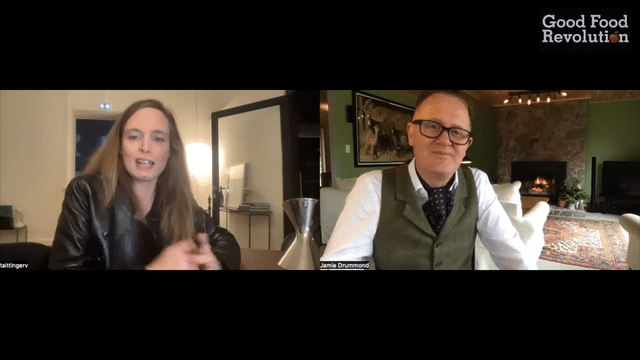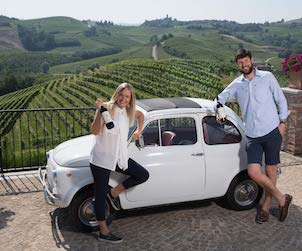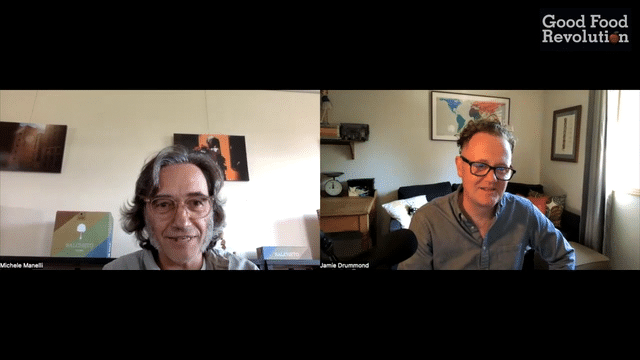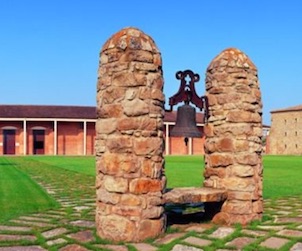Capriolo, Italy, May 2024 —
“Va bene…wake up, wake up!” – our engaging Italian tour guide Barbara was on the mic, awakening us from our bus naps for a scheduled stop. My family was on a 2-week tour of Italy, and on this 6th day, we were a third of the way to the famous, floating city of Venice from the lush, gorgeous Lakes District in the north.
Our group of travellers—a mix of Canadians, Americans, Australians, and New Zealanders – exited the coach, which our driver Tiziano had parked beside a small patch of vines that were so perfect they made me think of Bob Ross’s happy little trees. Barbara then proceeded to literally stop traffic for us, allowing us to cross the road and step along a stony path onto a property that was lined with trees and terracotta buildings.
We had arrived at Ricci Curbastro, a sustainable farm estate winery located in the historical region of Franciacorta in the town of Capriolo, which is located on the left bank of the Olio River in the region of Lombardy. Still technically in the North of Italy, Capriolo is located at the foot of the Alps, between Lake Garda and Lake Iseo.

Photo: Ricci Curbastro Estate Winery
The terroir in this area is the result of pebbles, silt, sand, soils that are rich in minerals and the result of glacial movement. Olive trees flourish on these hills due to the mild Mediterranean climate, and the grape vines thrive due to the winds from the Camonica Valley and the proximity of Lake Iseo. The Ricci Curbastro family, a noble family from Lugo di Romagna, moved to this region from Florence in the thirteenth century as a result of the Guelph-Ghibelline wars, and they have been making wine for 18 generations.
Our mission at this picturesque unofficial rest stop was to whisk through the winery, experience a quick tasting, and be back on the bus in an hour. We were there to taste Franciacorta, an Italian sparkling wine that originated in this region. Franciacorta has DOCG status (Denominazione di origine controllata e garantita), which is the highest classification given to a wine in Italy.

To our delight, we were immediately greeted by the unofficial butlers of the property – two beautiful grey Weimaraner dogs named Alba and Artio. After receiving many pets, our new silver-coated friends led us to our tour guide, Hospitality Manager Roberta Buah, who then guided us to the Ricci Curbastro Agriculture and Wine Museum, a small building located near the entrance to the farm estate property. Once inside, we had time for a quick peek at a vast array of antique tools of the winemaking trade dating back to the 19th century: old wine presses, glass jars, tools, and a vintage grape crusher and de-stemmer, as well as detailed charts and photographs.

With our brief history lesson over, we ventured on to the main winery building and descended to the wine cellar. There we toured among the racks of wine bottles, large oak barrels, and stainless-steel tanks as Roberta explained the different methods of production and fermentation used to make each wine.

Most producers in the area, including Ricci Curbastro, are members of the Consortium for the Protection of Franciacorta, the governing body for the region that requires growers to plant 4,500 tons of Chardonnay, Pinot Blanc, Pinot Noir, and Erbamat per hectare, and to age wines on yeast for at least 18 months. The Ricci Curbastro estate uses organic farming practices. Since 2017, it has been among the first nine companies in Italy (the first in Lombardy) to be certified under the Equalitas standard as a sustainable winery.

Our guide, Hospitality Manager Roberta Buah.
As the tour continued, we climbed the stairs and landed in the large, bright tasting room where we were reunited with our canine companions. Roberta poured, and we enjoyed samples of the Franciacorta Brut DOCG, Curtefranca Bianco DOC, and Curtefranca Rosso DOC Vigna Santella del Gröm, while perusing the room which was decorated with maps of the region and photos depicting the history of the estate.
While we enjoyed delicious morsels of Parmigiano Reggiano, we were politely persuaded by Alba and Artio to pay “the cheese tax”, a request to which we gladly obliged.


NV Ricci Curbastro Franciacorta Brut DOCG – 12.5%
60% Chardonnay/30% Pinot Blanc/10% Pinot Noir
Easy-drinking, elegant, and equal part floral and fruity, this special sparkling has a brilliant straw yellow colour and notable intensity with notes of baked bread. On the palate, it is structured and dry but smooth with a long, balanced finish.
The wine is made using temperature-controlled stainless steel fermentation, followed by the “en tirage” process in the spring, with a slow second fermentation in the bottle. Like the méthode Champenoise, this fermentation is known as the traditional Franciacorta method. Bottles are stacked for at least 30 months (38 total from harvest), and 8 g/litre of dry liqueur de dosage is added, followed by the fining period in the cellar for several months.
Best enjoyed with hors d’ouevres, soft cheeses, and delicate fish dishes.
2023 Ricci Curbastro Curtefranca Bianco D.O.C. (Organic) — 11.5% – 12%
60% Chardonnay/30-40% Pinot Blanc
Delicate, with fine hints of fresh fruit, this dry white has a pale straw yellow colour with greenish hues, pleasant acidity, and a sturdy backbone. Fermented in temperature-controlled stainless steel, this wine is made to be enjoyed young but also ages well up to 3 years after harvest.
Best enjoyed with light appetizers, fish, white meats, and fresh cheeses
2020 Ricci Curbastro Curtefranca Rosso D.O.C. Vigna Santella del Gröm – 12.5%
25% Cabernet Franc/15% Carmenère/20% Cabernet Sauvignon/30% Merlot/10% Barbera
This full-bodied, deep ruby red wine begins with cold maceration followed by temperature-controlled stainless steel, and a fining process of at least 18 months in oak barrels. Once in the bottle, it then undergoes an additional year of aging.
Intense yet balanced, it has notes of wood and ripe fruit, and a good amount of acidity, and can be aged up to 7 years after harvest.
Best enjoyed with meats, stews, small and large game, charcuterie, and ripe cheeses.

Before long, our time was up. With our last sips of wine, words of gracious thanks to Roberta, and a few final pets for our new furry friends, we returned to the bus and settled back into our seats to continue our journey. As the coach turned back onto the road, we left Franciacorta with satisfied tastebuds and a little bit more Italian culture and history to remember.
And with that, Barbara returned to the mic to share more passionate knowledge of her home country with us before saying, “I let you rest”, leaving us to sleep, read, or gaze out the windows at the beautiful country that we were lucky to be visiting.
*Detailed information about the winery, including the map, was sourced from the Ricci Curbastro website, and on-site Hospitality Manager Roberta Buah.
Photos by Heather Heagney and family







